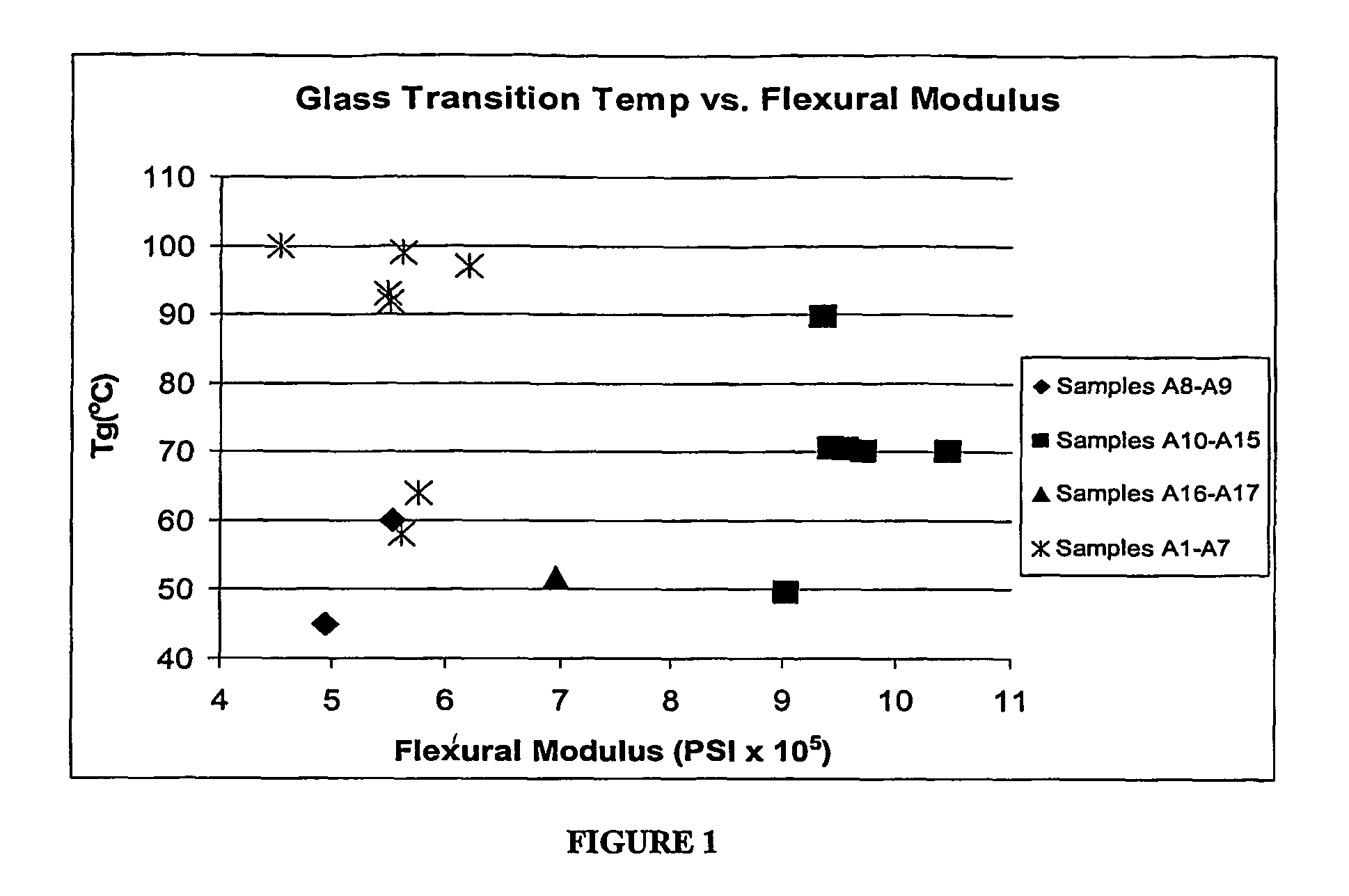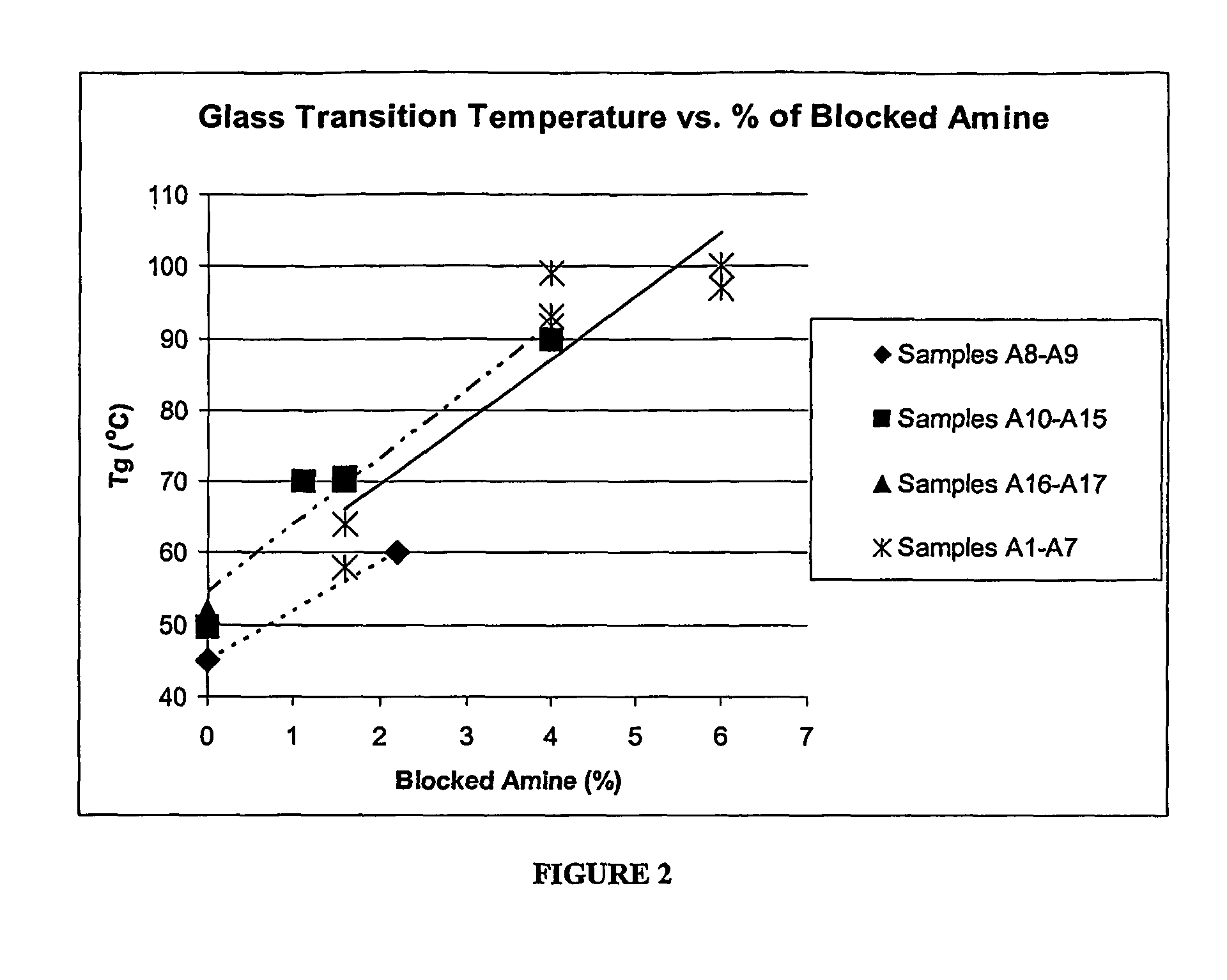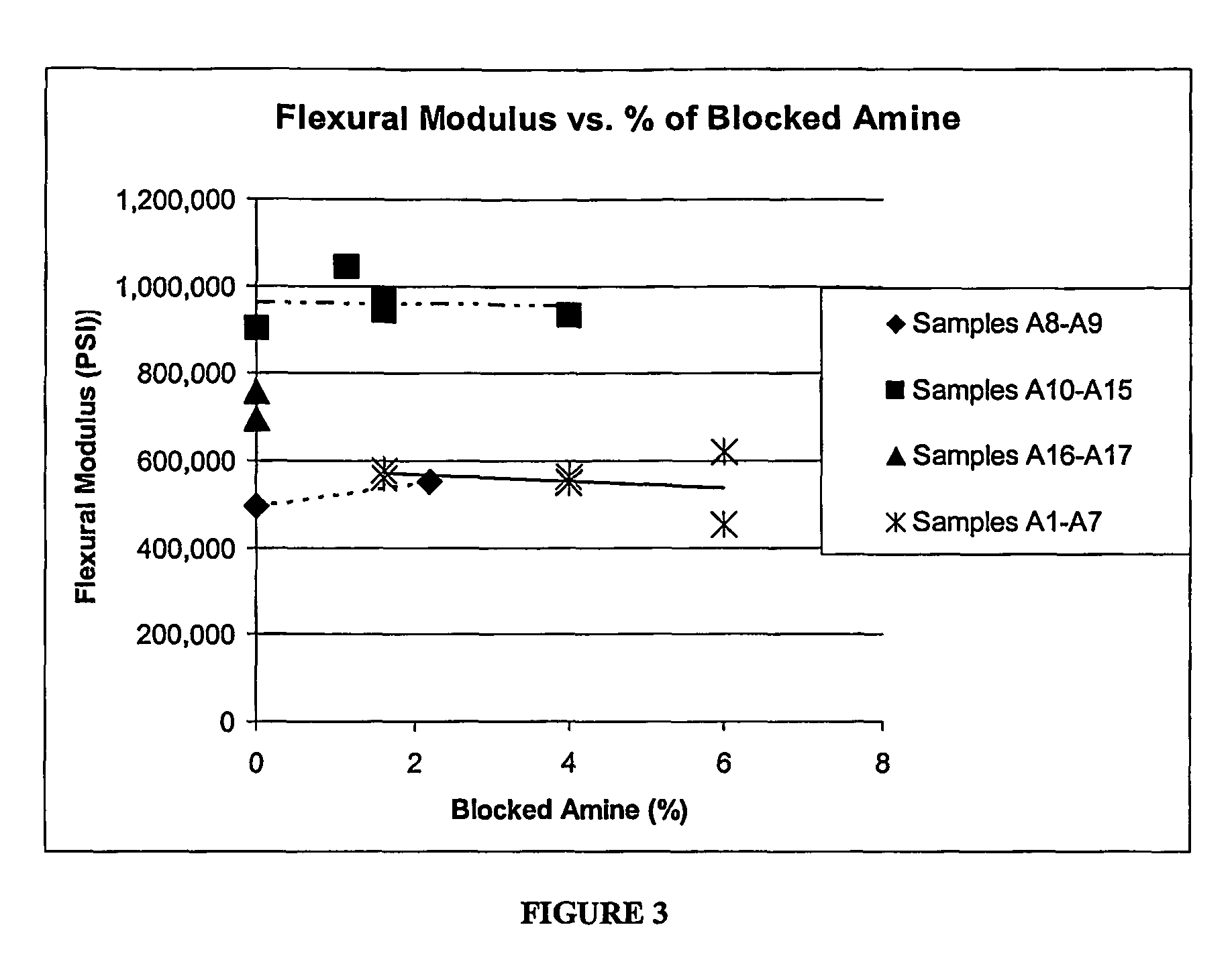Structural composites with enhanced moduli of elasticity
a structural composite and modulus technology, applied in the field of low cost structural composites, can solve the problems of not having the structural properties required to replace traditional wood products in many applications, and not being able to be processed in standard extrusion equipment, and achieves high flexural modulus, good dimensional stability, and high flexural modulus.
- Summary
- Abstract
- Description
- Claims
- Application Information
AI Technical Summary
Benefits of technology
Problems solved by technology
Method used
Image
Examples
example 1
[0059]In this example 20 wt % wood flour having a mesh size of about 100, was combined with 77 wt % of the thermoplastic base material of Example 1C, this was then processed in a single screw extruder with 3 wt % PB 3200. PB 3200 is available from Crompton Corporation, Middlebury, Conn., 06749, USA. The 100 mesh wood flour, obtained from American Wood Fibers, had an aspect ratio of about 4:1 L / d. The second thermoplastic resin PB3200 is a maleic anhydride grafted polypropylene. Tensile strength (psi), modulus of elasticity (psi), flexural strength (psi), and flexural modulus (psi) were measured.
[0060]See Tables 1 and 2, where the tested biomaterials are wood fiber, soy flour, hemp fiber, and flax fiber. A non-biomaterial additive is calcium carbonate. BP 7200 is a first thermoplastic, PB 3200 and phenethyltrimethoxysilane are the second thermoplastic selected thermoplastics. The second thermoplastic improved the flexural modulus over the control.
example 2
[0061]In this example 20 wt % wood flour having a mesh size of about 200, was added to 77 wt % of the base material of Example 1C, this was then processed in a single screw extruder with 3 wt % PB 3200. The 200 mesh wood flour, obtained from American Wood Fibers, had an
[0062]aspect ratio of about 3:1. Tensile strength (psi), modulus of elasticity (psi), flexural strength (psi), and flexural modulus (psi) were measured.
examples 3-11
[0063]Examples 3 through 11, were all processed with the aforementioned single screw extruder, and were typical repeats of Examples 1-2 with various biomaterials such as wood flour, soy flour (aspect ratio of about 2:1 L / d), hemp fibers, flax fibers; calcium carbonate (aspect ratio of about 2:1, about 400 mesh); thermoplastic resin (BP 7200), and second coupling agent (PB 3200, phenethyltrimethoxysilane, (i.e. PETMOS). PETMOS is available from Gelest, Inc., 612 William Leigh Drive, Tullytown, Pa. 19007, USA. Tensile strength (psi), modulus of elasticity (psi), flexural strength (psi), and flexural modulus (psi) were measured. See Table 1.
[0064]The PETMOS was added in the following manner. Wood flower (200 mesh) was added to a mixing bowl in the amounts shown in Table 1. A mixture of PETMOS in ethanol was sprayed onto the wood flower while mixing. The PETMOS coated wood flower was poured onto baking dishes. The baking dishes were placed on an oven at 110° C. for a time sufficient to ...
PUM
| Property | Measurement | Unit |
|---|---|---|
| aspect ratio | aaaaa | aaaaa |
| aspect ratio | aaaaa | aaaaa |
| aspect ratio | aaaaa | aaaaa |
Abstract
Description
Claims
Application Information
 Login to View More
Login to View More - R&D
- Intellectual Property
- Life Sciences
- Materials
- Tech Scout
- Unparalleled Data Quality
- Higher Quality Content
- 60% Fewer Hallucinations
Browse by: Latest US Patents, China's latest patents, Technical Efficacy Thesaurus, Application Domain, Technology Topic, Popular Technical Reports.
© 2025 PatSnap. All rights reserved.Legal|Privacy policy|Modern Slavery Act Transparency Statement|Sitemap|About US| Contact US: help@patsnap.com



